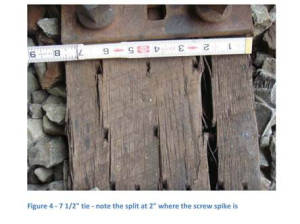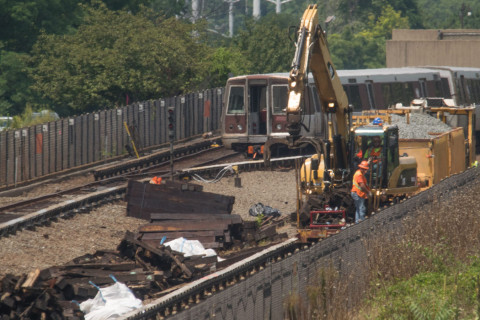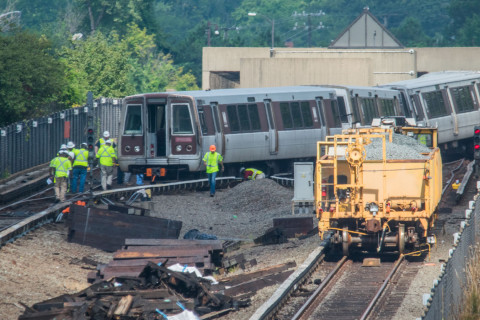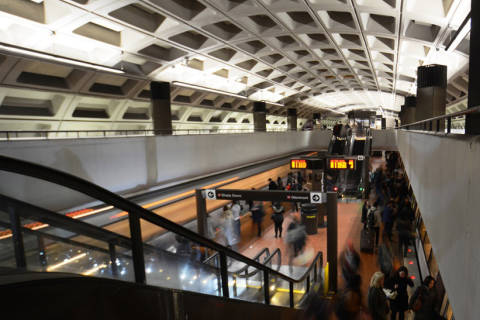WASHINGTON — The Federal Transit Administration is raising questions about whether Metro rail ties are the proper size to keep tracks safely in place.
A federal inspection report released Wednesday says inspectors have “consistently noted” WMATA crossties on mainline track that are 7 1/2 inches. Metro’s own standards call for rail ties at switches to have at least an 8-inch face.
The inspection report noted that as of Sept. 24, Metro had not responded to federal inspectors’ questions about crossties that are a half inch narrower than internal standards. It is not clear how many of the smaller crossties exist in the system, or whether Metro staff understood how important at least some federal inspectors believed the issue to be.

“Did engineering approve the procurement of crossties less than 8” in width?” the inspection report asks. If so, the inspectors say, Metro’s maintenance standards would need to be updated to reflect the change.
Narrower crossties do less to support the rails than the wider ones would. Metro’s latest procurement documents for rail ties seem to call for ties that could meet the written standards that the FTA is attempting to enforce.
In an email, Metro spokesman Richard Jordan said the photo provided in the report “appears to show a cross tie that was original to Metro’s construction (probably early 80s). Any original crossties are being replaced during SafeTrack with new ties that are in line with current specs.”
Crosstie replacement is a major focus of the 24/7 track work, and is what Metro refers to when it claims that the extended work zones help get three years of work done in one. Other work is not accelerated as much.
Crumbling crossties that date back decades have been at least partially blamed for a number of speed restrictions and safety issues, including the derailment near East Falls Church this summer.
This inspection report is part of a series of documents released this week by the Federal Transit Administration that identify a number of issues that Metro needs to address.







